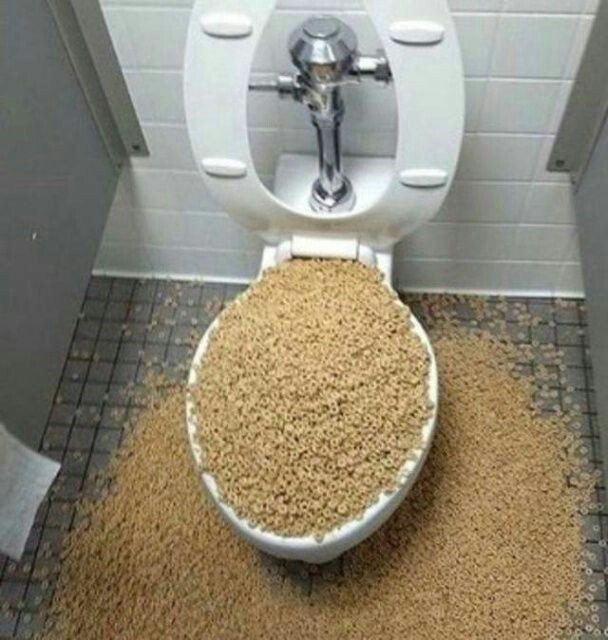Are You Allowed to Flush Food in the Toilet?
Are You Allowed to Flush Food in the Toilet?
Blog Article
What're your beliefs on Is it safe to flush food (especially rice) down the toilet??

Introduction
Lots of people are often faced with the problem of what to do with food waste, particularly when it pertains to leftovers or scraps. One typical inquiry that emerges is whether it's all right to flush food down the toilet. In this short article, we'll look into the reasons people might consider purging food, the repercussions of doing so, and alternate techniques for appropriate disposal.
Reasons that individuals could take into consideration purging food
Absence of recognition
Some people might not be aware of the possible damage triggered by flushing food down the toilet. They may erroneously believe that it's a safe practice.
Ease
Purging food down the bathroom may appear like a quick and very easy option to throwing away undesirable scraps, specifically when there's no close-by trash can offered.
Idleness
In some cases, people might simply choose to flush food out of large negligence, without thinking about the effects of their actions.
Repercussions of flushing food down the bathroom
Ecological influence
Food waste that ends up in waterways can contribute to contamination and harm aquatic ecological communities. Additionally, the water used to flush food can stress water sources.
Plumbing concerns
Flushing food can cause blocked pipelines and drains, creating expensive pipes fixings and aggravations.
Sorts of food that must not be flushed
Fibrous foods
Foods with fibrous textures such as celery or corn husks can obtain tangled in pipelines and cause blockages.
Starchy foods
Starchy foods like pasta and rice can absorb water and swell, leading to clogs in pipes.
Oils and fats
Greasy foods like bacon or cooking oils need to never be flushed down the commode as they can strengthen and trigger clogs.
Proper disposal approaches for food waste
Utilizing a garbage disposal
For homes geared up with waste disposal unit, food scraps can be ground up and purged via the plumbing system. Nevertheless, not all foods appropriate for disposal in this manner.
Recycling
Specific food product packaging products can be reused, decreasing waste and reducing ecological influence.
Composting
Composting is an environment-friendly way to dispose of food waste. Organic products can be composted and made use of to improve dirt for horticulture.
The relevance of appropriate waste management
Decreasing ecological injury
Correct waste monitoring techniques, such as composting and recycling, aid lessen contamination and preserve natural deposits for future generations.
Shielding plumbing systems
By preventing the technique of flushing food down the toilet, property owners can protect against expensive plumbing repairs and preserve the honesty of their pipes systems.
Conclusion
To conclude, while it may be appealing to flush food down the bathroom for ease, it is very important to recognize the prospective effects of this activity. By embracing proper waste administration practices and getting rid of food waste sensibly, individuals can contribute to healthier plumbing systems and a cleaner environment for all.
THINK TWICE BEFORE FLUSHING FOOD DOWN YOUR TOILET IN FALLBROOK CA
Let’s be honest, we’re really supposed to be tossing rotten or leftover food in the compost bin or trash can. But many people like to place scraps of food down the drain of, say, their kitchen sink. That’s why the garbage disposal was invented: so we can continue to place certain foods down the drain without clogging our drain in the process. Smart.
But not all of us have the luxury of having a garbage disposal installed. So, you might continue to shove food down your sink drain anyway – or worse: you might flush them down your toilet! If you’re guilty of doing the latter, you’re going to want to stop, and here’s why:
Toilet Drains Aren’t Designed to Handle Food!
There’s your answer: food just doesn’t belong in your toilet. It may seem like your toilet drain is wider than the drains of your sinks, but truth be told, that isn’t actually the case. The narrower pipes of your toilet leave your plumbing at risk for clogging if you do happen to flush your food. In addition, food doesn’t break down as quickly that toilet paper and human waste do. In turn, this leaves your toilet at risk for a nasty clog.
Although a flush of a tiny pinch of food every now and then isn’t going to completely damage your toilet, there are certain foods that should absolutely not be flushed in your toilet at all. These include starchy foods like mashed potatoes, grains, hard pieces of food that are slow to break down, and fats and oils.
The latter categories of food are particularly problematic as they may harden, expand as they absorb water, break down slowly in your system, or generally create the perfect obstruction with their gelatinous composition. These are all things you don’t want in your plumbing system!
Experiencing a Toilet Clog?
Nobody’s perfect, and we all make mistakes. Sometimes one of the mistakes people make is flushing food down their toilet and later realizing that it wasn’t the best thing to do once they see that their toilet is now clogged. Uh-oh!

We are very interested in Flushing Food Down the Toilet? and I am hoping you enjoyed the entire post. Sharing is good. Helping people is fun. I truly appreciate your readership.
Book Appointment Report this page